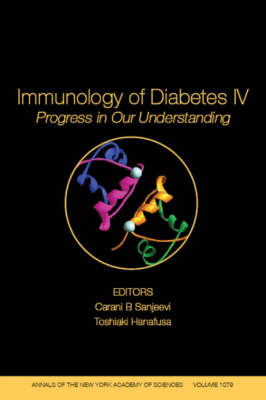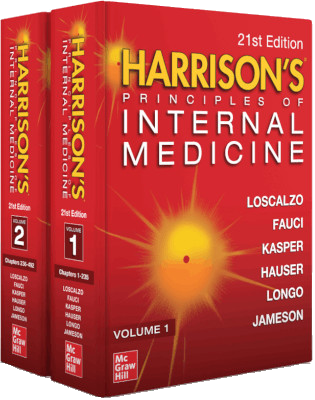
Immunology of Diabetes IV
Wiley-Blackwell (Verlag)
978-1-57331-641-5 (ISBN)
- Titel z.Zt. nicht lieferbar
- Versandkostenfrei innerhalb Deutschlands
- Auch auf Rechnung
- Verfügbarkeit in der Filiale vor Ort prüfen
- Artikel merken
Reports from workshops on autoantibodies and T cells are included, as are chapters covering target autoantigens, innate immunity in type 1 diabetes, fluminant type 1 diabetes, and the role of viral infections in type 1 diabetes. The genetics of LADA and SPIDDM are presented as well as a comparison of their immunoepidemiology and immunopathological features. A section on genetics and the characteristics of susceptible genes concludes the basic research.
The clinical topices covered include islet regeneration and the use of stem cells in mediating tolerance for type 1 diabetes prevention. Reports on the progress on islet transplantation conclude the volume.
NOTE: Annals volumes are available for sale as individual books or as a journal. For information on institutional journal subscriptions, please visit www.blackwellpublishing.com/nyas.
ACADEMY MEMBERS: Please contact the New York Academy of Sciences directly to place your order (www.nyas.org). Members of the New York Academy of Science receive full-text access to the Annals online and discounts on print volumes. Please visit http://www.nyas.org/MemberCenter/Join.aspx for more information about becoming a member
Carani B. Sanjeevi is the editor of Immunology of Diabetes IV: Progress in Our Understanding, Volume 1079, published by Wiley. Toshiaki Hanafusa is the editor of Immunology of Diabetes IV: Progress in Our Understanding, Volume 1079, published by Wiley.
Part I: Special Papers:. 1. The Type 1 Diabetes Genetics Consortium: Stephen S. Rich, Patrick Concannon, Henry Erlich, Cecile Julier, Grant Morahan, Jorn Nerup, Flemming Pociot, John A. Todd.
2. A Mini Meta-Analysis of Studies on CD4+CD25+ T Cells in Human Type 1 Diabetes; Report of the Immunology of Diabetes Society T Cell Workshop: Timothy I.M. Tree, Bart O Roep and Mark Peakman.
3. HLA Class I Epitope Discovery in Type I Diabetes: Independent and Reproducible Identification of Proinsulin Epitopes of CD8 T-Cells. Gabrielle G. M. Pinkse, Christian Boitard, Timothy I.M Tree, Mark Peakman and Bart O. Roep.
Part II: Diabetes in Asia:.
4. Genetics of Fluminant Type 1 Diabetes. Eiji Kawasaki, Katsumi Eguchi.
5. Why is Type 1 Diabetes Uncommon in Asia?: Yongsoo Park.
6. Association of SUMO4, as a Candidate Gene for IDDM5, with Susceptibility to Type 1 Diabetes in Asian Populations: Shinsuke Noso, Hiroshi Ikegami, Tomomi Fujisawa, Yumiko Kawabata, Katsuaki Asano, Yoshihisa Hiromine, Miyuki Moritani, Shigetaka Sugihara, Inkyu Lee, Eiji Kawasaki, Takuya Awata, Toshio Ogihara.
7. The Gene for Human IL-21 and Genetic Susceptibility to Type 1 Diabetes in Japanese: Katsuaki Asano, Hiroshi Ikegami, Tomomi Fujisawa, Yumiko Kawabata, Shinsuke Noso, Yoshihisa Hiromine, Toshio Ogihara.
8. Genetics of Type 1 Diabetes: Similarities and Differences Between Asian and Caucasian Populations: Hiroshi Ikegami, Tomomi Fujisawa, Yumiko Kawabata, Shinsuke Noso, Toshio Ogihara.
Part III: Latent Autoimmune Diabetes in Adults (LADA):.
9. Immunopathological and Genetic Features in Slowly Progressive Insulin-Dependant Diabetes Mellitus (SPIDDM) and Latent Autoimmune Diabetes in Adult (LADA): Tetsuro Kobayashi, Shoichiro Tanaka, Norikazu Harii, Kaoru Aida, Hiroki Shimura, Masayuki Ohmori, Masahiro Kanesige, Akira Shimada, Taro Maruyama.
10. Genes Influencing Innate and Acquired Immunity in Type 1 Diabetes and Latent Autoimmune Diabetes in Adults: Carani B Sanjeevi.
11. Progression of Autoimmune Diabetes: Slowly Progressive Insulin Dependent Diabetes Mellitus (SPIDDM) or Latent Autoimmune Diabetes of Adult (LADA): Huriya Beyan, Thomas Ola, R. David G. Leslie.
12. Immunomodulation for the Prevention of SPIDDM and LADA: P.Pozzilli, C. Guglielmi.
Part IV: Animal Models:.
13. Heightened Interferona/b Response Causes Myeloid Cell Dysfunction and Promotes T1D Pathogenesis in NOD Mice: Ruihua Peng, Paek E., Xia C.Q., Tennyson N., and M.J. Clare-Salzler.
14. Immunolocalization of Monocyte Chemoattractant Protein-1 (MCP-1) in Islets of NOD Mice During Cyclophosphamide Administration: Shiva Reddy, Yan Bai, Elizabeth Robinson, Jacqueline Ross.
15. Young NOD Mice Show Increased Diabetes Sensitivity to Low Doses of Streptozotocin: Shiva Reddy, Mike Chang, Elizabeth Robinson.
16. Contribution of Class III MHC to Susceptibility to Type 1 Diabetes in the NOD Mouse: Kaori Yamaji, Hiroshi Ikegami, Tomomi Fujisawa, Shinsuke Noso, Koji Nojima, Naru Babaya, Michiko Itoi-Babaya, Mistao Kobayashi, Yoshihisa Hiromine, Susumu Makino, Toshio Ogihara.
17. Mhc- Linked Susceptibility to Type 1 Diabetes in the NOD Mouse: Further Localization of IDD16 by Subcongenic Analysis: Tomomi Fujisawa, Hiroshi Ikegami, Kaori Yamaji, Koji Nojima, Naru Babaya, Mchiko Itoi-Babaya, Yoshimasa Hiromine, Misato Kobayashi, Susumu Makino, Toshio Ogihara.
18. Long-Term Prevention of Diabetes and Marked Suppression of Insulin Autoantibodies and Insulitis in Mice Lacking Native Insulin B9-23 Sequence: M. Nakayama, N. Babaya, D. Miao, R. Gianani, E. Liu, J. F. Elliot, G. S. Eisenbarth.
19. Eicosanoid Imbalance in the NOD Mouse is Related to a Dysregulation in Soluble Epoxide Hydrolase and 15-PGDH Expression: Michelle Rodriguez and Macheal Clare Salzler.
20. Pancreatic Autoimmunity Induction with Insulin B:9-23 Peptide and Viral Mimics in the NZB Mouse: Devasenan Devendra, Dongmei Miao, Maki Nakayama, George S. Eisenbarth and Edwin Liu.
21. Viruses Cause Type 1 Diabetes in Animals : Ji-Won Yoon and Hee-Sook Jun.
22. Characterization of PAF-AH IB1 in NOD Mice: PAF-AH IB1 May Not be a Candidate of Diabetes Susceptibility IDD4.1 Locus: Qing-Shen Mi, Li Zhou, Marsha Grattan, Zai-Zhao Wang, M. Sivilotti, Jing-Xiang She and Terry L Delovitch.
23. Peptide-Pulsed Immature Dendritic Cells Reduce Response to Β Cell Target Antigens and Protects NOD Recipients from Type 1 Diabetes: Jeannette Lo, Rui Hua Peng, Tolga Barker and Michael J. Clare-Salzler.
24. New Members of the Interleukin-12 (IL-12) Family of Cytokines, IL-23 and IL-.
Part V: T-Cells:.
25. Glutamic Acid Decarboxylase-Specific CD4+ Regulatory T Cells: Chih-Pin Liu.
26. Metabolism Genes are Amongst the Differentially Expressed Ones Observed in Lymphomononuclear Cells of Recently Diagnosed Type 1 Diabetes Mellitus Patients: Rassi D.M., Junta C.M., Fachin A.L., Sandrin-Garcia P., Mello S., Marques M.M.C., Fernandes A.P.M., Foss-Freitas M.C., Foss M.C., Sakamoto-Hojo E.T., Passos G.A.S., Donadi E.A.
27. In Vitro TNF-Α and IL-6 Production by Adherent Peripheral Blood Mononuclear Cells Obtained from Type 1 and Type 2 Diabetic Patients Evaluated According to the Metabolic Control: Maria Cristina Foss-Freitas, Norma Tiraboschi Foss, Edurado Antonio Donadi, Miltom Cesar Foss.
28. T Cell Immunity to Glutamic Acid Decarboxylase in Fulminant Type 1 Diabetes Without Significant Elevation of Serum Amylase: Kanemi Aoki MD, Matsuo Taniyama MD, Chieko Nagayama MD, Yoichi Oikawa MD, Akira Shimada MD.
29. Expression Levels of CXC Chemokine Receptors 3 are Associated with Clinical Phenotype of Type 1 Diabetes: Satoru Yamada, Yoichi Oikawa, Gen Sakai, Yoshihito, Atsumi, Taro Maruyama, Akira Shimada.
30. HLA Class I Epitope Discovery in Type 1 Diabetes: Peter Van Endert, Yousra Hassainya, Vivian Lindo, Jean-Marie Bach, Philippe Blancou, Francois Lemonnier, Roberto Mallone.
31. Up Regulation of FOXP3 Expression in Mouse and Human TREG IS IL-2/STAT5 Dependent; Implications for the NOD STAT5B Mutation in Diabetes Pathogenesis: Matthew R. Murawski, S.A. Litherland, M.J: Clare-Salzler, and A. Davoodi Semiromi.
32. Normal T Cell Development in the Absence of Thymic Insulin Expression: Maria Carlsen and Corrado M Cilio.
Part VI: Autoantibodies:.
33. Antigenic Determinants to GAD Autoantibodies in Patients with Type 1 Diabetes with and Without Autoimmune Thyroid Disease: Hyewon Park, Liping Yu, Taewha Kim, Boyoun Cho, Jungoo Kang, Yongsoo Park.
34. TSH Receptor Antibodies in Subjects with Type 1 Diabetes Mellitus: Unnikrishnan Ag, Kumaravel V, Vasantha Nair, Ananth Rao, Rv Jayakumar, Harish Kumar, CB Sanjeevi.
35. Time-Resolved Fluorescence Imaging of Islet Cell Autoantibodies: P. Vuorinen, M. Rulli, A. Kuusisto, S. Simmel, T. Simmel, T. Vahlberg, J. Ilonen, H. Hyöty, M. Knip, O. Simell.
36. Mhc Class I Chain Related Gene-A (MICA) is Associated with IA2 and IAA But Not GAD in Swedish Type 1 Diabetes Mellitus (T1DM), Gupta M, Graham J, McNeeny B, Zarghami L, Landin-Olsson M, Hagopian W A, Palmer J, Lernmark Å, Sanjeevi CB.
Part VII: Genetics:.
37. Association of the Polymorphism for Toll-Like Receptor 2 with Type 1 Diabetes (T1D) Susceptibility and Predominance of the Group A Killer IG-Like Receptor Haplotypes in Korean Patients with T1D: Park Y, Choi H, Park H, Park S, Yoo E, Kim D, Shin H, Sanjeevi.
38. Frequency of CTLA-4 CT60 Polymorphism May Not Be Affected by Vitamin D Receptor BSM I Polymorphism or HLA DR9 in Autoimmune-Related Type 1 Diabetes in Japanese: Yasuhiko Kanazawa, Yoshiko Motohashi, Satoru Yamada, Yoichi Oikawa, Toshikatsu Shigihara, Yoshiaki Okubo, Taro Maruyama, Akira Shimada.
39. Genetic and Functional Evidence Supporting SUMO4 as a Type 1 Diabetes Susceptibility Gene: Cong-Yi Wang, Robert Podolsky and Jin-Xiong She.
40. No Association of TLR2 and TLR4 Polymorphisms with Type I Diabetes in Basque Population: I Santin, Jr Bilbao, G Pérez De Nanclares, B Calvo and L Castaño.
41. Association of SUMO4 M55V Polymorphism with Autoimmune Diabetes in Latvian Patients: Saikiran K Sedimbi, Arun Shastry, Yongsoo Park, Ingrida Rumba and Carani B. Sanjeevi.
42. A Second Component of HLA-Linked Susceptibility to Type 1 Diabetes Maps to Class I Region: Yumiko Kawabata, Hiroshi Ikegami, Tomomi Fujisawa, Shinsuke Noso, Katsuaki Asano, Yoshihisa Hiromine, Toshio Ogihara.
43. Molecular Scanning of the Gene for Programmed Cell Death-1 (PDCD-1) as a Candidate for Type 1 Diabetes Susceptibility: Yoshihisa Hiromine, Hiroshi Ikegami, Tomomi Fujisawa, Yumiko Kawabata, Shinsuke Noso, Kaori Yamaji, Katsuaki Asano, Toshio Ogihara.
44. Genetic Determinants of Type 1 Diabetes Across Populations: Mohamed M Jahromi and George S Eisenbarth.
45. Tnfa-E Microsatellite, HLA-DRB1 and DQB1 Alleles and Haplotypes in Brazilian Patients Recently Diagnosed Type 1 Diabetes Mellitus: Rassi D.M, Wastowski I.J, Simones R.T, Rodrigues S, Deghaide N.N.H.S, Mendes Junior C.T, Simoes A.L, Soares C.P, Donadi E.A.
46. Is HLA Class II Profile Relevant for the Study of Large Scale Differentially Expressed Genes in Type 1 Diabetes Mellitus Patients?: Rassi D.M., Junta A.L., Fachin A.L., Sandrin-Garcia P., Mello S., Fernandes A.P.M., Deghaide N.N.H.S., Foss-Freitas M. C., Foss M.C., Sakamoto-Hojo E.T., Passos G.A.S., Donadi E.A.
Part VIII: Prediction and Prevention.
47. Feasibility of a Type 1 Diabetes Primary Prevention Trial Using 2000 IU Vitamin D3 in Infants from the General Population with Increased HLA-Associated Risk: BA Wicklow and SP Taback for the Winnipeg Dvd Study Group. Departments of Pediatrics and Child Health and Community Health Sciences, University of Manitoba, Winnipeg, MB, Canada.
48. Interleukin-10 Plasmid Construction and Delivery for the Prevention of Type 1 Diabetes: Minhyung Lee, Hyewon Park, Jeehee Youn, Eun Taex Oh, Kyungsoo Ko, Sungwan Kim, Yongsoo Park.
49. Teddy – The Environmental Determinants of Diabetes in the Young – An Observational Clinical Trial: Teddy Study Investigators.
50. Protection from Type 1 Diabetes by Vitamin D Receptor Haplotypes: Elizabeth Ramos-Lopez, Thomas Jansen, Vytautas Ivaskevivius, Heinrich Kahles, Christian Klepzig, Johannes Oldenburg and Klaus Badenhoop.
51. Living Donor Islet Transplantation, the Alternative Approach to Overcome the Obstacles Limiting Transplant: Yasuhiro Iwanaga, Schinichi Mastsumoto, Teru Okitsu, Hirofumi Noguchi, Hideo Nagata, Yukihide Yonekawa, Yuichrio Yamada, Kazuhito Fukuda, Kastsushi Tsukiyama, Koichi Tanaka.
52. DiaPep 277(R) Preserves Endogenous Insulin Production by Immunomodulation in Type 1 Diabetes: D.Elias, A. Avron, M.Tamir, I. Raz, Develogen Israel Ltd., Kiryat Weizmann.
53. Cord Blood Islet Autoantibodies are Related to Stress in the Mother During Pregnancy: Barbro Lernmark, Kristian Lynch, Åke Lernmark and the DIPIS Study Group.
54. Is It Dietary Insulin?: Outi Vaarala.
55. Probiotics for Prevention of Beta-Cell Autoimmunity in Children at Genetic Risk of Tupe 1 Diabetes-Prodia Study: Martin Ljungberg, Riita Korpela, Jorma Ilonen, Jhonny Ludvigsson, Outi Vaarala.
56. Thiazolidinediones May Not Reduce Diabetes Incidence in Type 1 Diabetes: Toshikastu Shirihara, Yoshiaki Okubo, Yasuhiko Kanazawa, Yoichi Oikawa, Akira Shimada.
57. Mechanisms Mediating Anti-CD3 Antibody Efficacy: Insights from a Mathematical Model of Type 1 Diabetes: Daniel L. Young, Saroja Ramanujan, Huub T.C.Kreuwel, Chan Chung Whiting, Kapil G. Gadkar, Lisl K.M. Shoda
| Erscheint lt. Verlag | 26.12.2006 |
|---|---|
| Reihe/Serie | Annals of the New York Academy of Sciences |
| Verlagsort | Hoboken |
| Sprache | englisch |
| Maße | 152 x 229 mm |
| Gewicht | 680 g |
| Themenwelt | Medizinische Fachgebiete ► Innere Medizin ► Diabetologie |
| ISBN-10 | 1-57331-641-5 / 1573316415 |
| ISBN-13 | 978-1-57331-641-5 / 9781573316415 |
| Zustand | Neuware |
| Haben Sie eine Frage zum Produkt? |
aus dem Bereich


